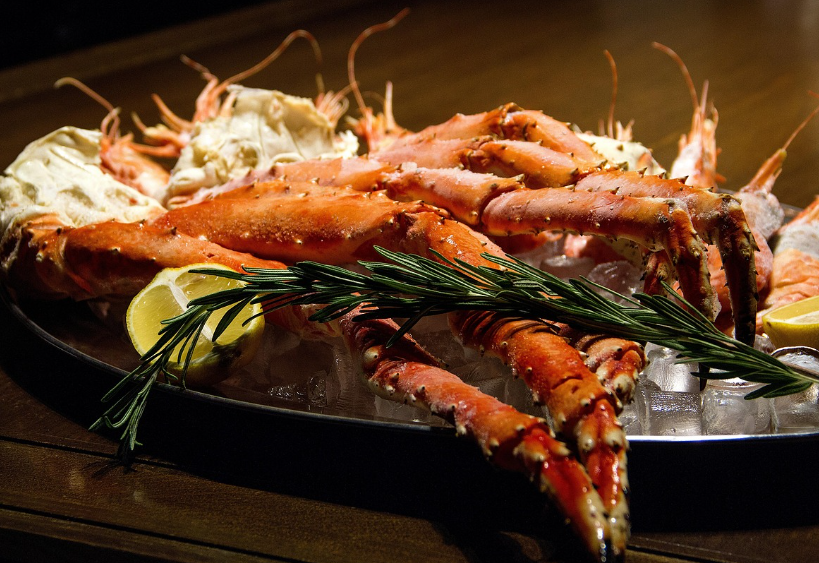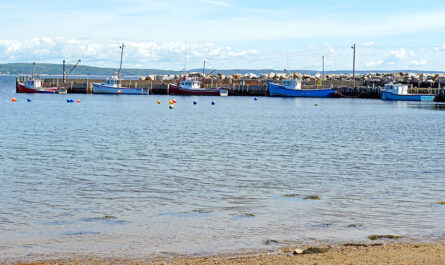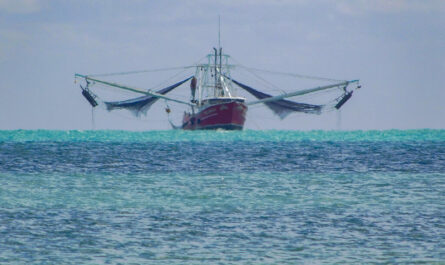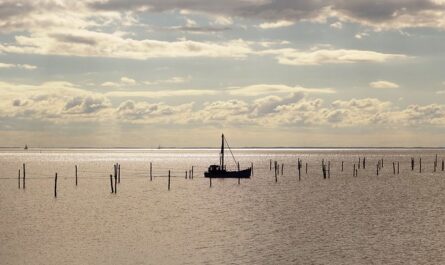The Atlantic Ocean has long been a bountiful source of seafood for millions of people around the globe. Traditionally, wild-caught fisheries have dominated the seafood market. However, growing concerns over overfishing, environmental sustainability, and climate change are pushing the industry toward more controlled and sustainable practices—namely, aquaculture. In the Atlantic region, innovative aquaculture techniques are rapidly emerging as a viable alternative to wild-caught methods. This article explores the key differences between aquaculture and wild-caught seafood, examines their environmental, economic, and technological impacts, and considers how the Atlantic is paving the way for a sustainable future in seafood production.
1. Understanding the Basics
Wild-Caught Seafood: Tradition and Natural Harvest
Wild-caught seafood refers to fish, shellfish, and other marine species harvested directly from their natural habitats in the ocean. The Atlantic has been a rich source of various species, including cod, haddock, shrimp, and lobsters, which have supported both local economies and global markets for centuries. Traditional fishing methods—ranging from trawling and longlining to gillnetting—have been employed to capture these species.
Key Points:
- Natural Ecosystem: Wild-caught seafood is part of complex marine ecosystems where predators, prey, and competitors interact naturally.
- Biodiversity: Harvesting from the wild can support a wide range of species, but it also requires careful management to prevent depletion.
- Economic Importance: For many coastal communities, wild-caught fisheries are a critical source of income and cultural identity.
Aquaculture: Farming Seafood in Controlled Environments
Aquaculture, often referred to as fish farming, involves the cultivation of marine organisms in controlled environments such as sea cages, ponds, or on land-based systems. In the Atlantic, aquaculture has evolved rapidly with advances in technology and sustainability practices. This method allows producers to control growth conditions, reduce the risk of overfishing, and supply consistent, high-quality seafood to consumers.
Key Points:
- Controlled Environment: Aquaculture operations can regulate factors like water quality, temperature, and feeding, leading to more predictable yields.
- Sustainability: With proper management, aquaculture can reduce pressure on wild populations and help restore natural stocks.
- Innovation: The Atlantic region has become a hub for aquaculture innovations, including integrated multi-trophic systems and selective breeding for disease resistance.
2. Environmental Considerations
Wild-Caught: The Ecological Impact
While wild-caught seafood is a natural process, intensive fishing practices can lead to significant ecological challenges:
- Overfishing: Unsustainable fishing practices have led to the depletion of many fish populations, disrupting marine ecosystems and reducing biodiversity.
- Bycatch: Many traditional fishing methods result in the unintended capture of non-target species, including endangered marine life.
- Habitat Damage: Techniques like bottom trawling can devastate sensitive ocean habitats, including coral reefs and seafloor communities.
These issues have prompted increased regulation and the need for more sustainable practices to ensure that wild-caught fisheries can be maintained for future generations.
Aquaculture: A More Sustainable Alternative?
Aquaculture offers several environmental advantages when managed responsibly:
- Reduced Pressure on Wild Stocks: By cultivating seafood in controlled environments, aquaculture can relieve the pressure on overexploited wild populations.
- Efficient Resource Use: Many aquaculture systems in the Atlantic are designed to be energy-efficient and environmentally friendly. For example, shellfish farms require no external feed and can improve water quality through natural filtration.
- Habitat Restoration: Integrated multi-trophic aquaculture (IMTA) systems combine the cultivation of multiple species—such as fish, shellfish, and seaweeds—in a synergistic manner that mimics natural ecosystems. These systems can help rehabilitate degraded marine habitats.
However, aquaculture is not without challenges. Issues such as waste management, potential disease outbreaks, and the environmental impacts of feed production must be carefully addressed. With advances in technology and sustainable practices, many of these concerns are being mitigated, making aquaculture a promising path for the future of seafood.
3. Economic Implications and Market Trends
Economic Value of Wild-Caught Fisheries
Wild-caught seafood has historically been a cornerstone of the Atlantic’s economy. Coastal communities rely on fishing for their livelihoods, and seafood is a major export product for many countries bordering the Atlantic. However, as fish stocks dwindle and regulatory pressures increase, the economic viability of wild-caught fisheries is under threat.
Economic Challenges:
- Resource Scarcity: Overfishing has led to declining catches in many regions, driving up the cost of wild-caught seafood.
- Market Instability: Wild fisheries are often subject to seasonal fluctuations and environmental uncertainties, leading to inconsistent supply.
- Sustainability Costs: New regulations aimed at preventing overfishing can increase operational costs for traditional fisheries.
The Rise of Aquaculture Economies
Aquaculture is emerging as a robust economic alternative, with several key benefits:
- Consistent Production: Controlled environments allow for more predictable yields, reducing the risks associated with seasonal and environmental variability.
- Job Creation: The expansion of aquaculture can create new jobs in rural and coastal areas, from farm management to processing and distribution.
- Investment in Innovation: Advances in aquaculture technology, such as automated feeding systems and real-time monitoring, attract investments that drive further growth and efficiency.
- Export Potential: High-quality, sustainably produced seafood from aquaculture operations in the Atlantic is increasingly in demand on the global market, boosting export revenues.
As consumer demand shifts toward sustainably sourced seafood, aquaculture is well-positioned to capture a larger share of the market. This economic transition is supported by both government initiatives and private investments aimed at modernizing the seafood supply chain.
4. Technological Innovations in Aquaculture
Advanced Monitoring Systems
Modern aquaculture in the Atlantic is leveraging cutting-edge technology to enhance production efficiency and sustainability:
- Remote Sensing and IoT: Sensors and Internet of Things (IoT) devices monitor water quality, temperature, and oxygen levels in real time. This data helps farmers optimize conditions for maximum growth and minimize environmental impact.
- Automated Feeding: Precision feeding systems ensure that fish and shellfish receive the optimal amount of food, reducing waste and improving feed conversion ratios.
- Disease Management: Advanced diagnostic tools and biosecurity measures help detect and manage disease outbreaks before they spread, protecting both farmed and wild populations.
Integrated Multi-Trophic Aquaculture (IMTA)
IMTA is an innovative approach that cultivates multiple species together, each occupying a different trophic level. For example, finfish, shellfish, and seaweed can be farmed simultaneously in a complementary system:
- Nutrient Recycling: The waste produced by fish serves as a nutrient source for seaweed, while shellfish help filter and clean the water.
- Enhanced Ecosystem Health: By mimicking natural ecosystems, IMTA reduces environmental impacts and promotes biodiversity.
- Economic Diversification: This system allows farmers to harvest multiple products from a single operation, improving overall profitability and reducing market risk.
Genetic Research and Selective Breeding
To improve the resilience and productivity of farmed species, researchers in the Atlantic are increasingly turning to genetic research and selective breeding:
- Disease Resistance: Breeding programs focus on developing strains that are more resistant to common diseases, reducing the need for antibiotics and other interventions.
- Faster Growth: Selectively bred species can reach market size more quickly, increasing efficiency and reducing operational costs.
- Climate Adaptation: With climate change impacting ocean conditions, genetic improvements can help create species that are more tolerant of higher temperatures and increased acidity.
5. Consumer Perspectives and Sustainable Seafood Trends
Changing Consumer Preferences
Modern consumers are increasingly conscious of where their food comes from and how it is produced. Sustainability, ethics, and environmental impact are now major factors in purchasing decisions. This shift in consumer behavior is driving demand for seafood that is produced in a responsible manner.
- Eco-Friendly Choices: Consumers are willing to pay a premium for sustainably sourced seafood, making aquaculture a more attractive option.
- Health Considerations: Farmed seafood can be produced with controlled diets and reduced exposure to pollutants, offering a healthier alternative to wild-caught options.
- Transparency: With advances in traceability technology, consumers can now track the journey of their seafood from farm to table, increasing trust in aquaculture practices.
Market Certification and Labeling
Certification programs play a crucial role in guiding consumers toward sustainable choices. Labels such as the Aquaculture Stewardship Council (ASC) certification ensure that seafood is produced in an environmentally responsible manner. These certifications not only protect the environment but also add value to the product, creating a competitive advantage in the marketplace.
- Quality Assurance: Certification labels offer assurance that the seafood meets stringent sustainability and quality standards.
- Consumer Education: These labels help educate consumers about the benefits of sustainable aquaculture, encouraging informed purchasing decisions.
- Global Standards: International certification programs set benchmarks that producers worldwide can adhere to, promoting consistency and transparency in the seafood industry.
6. Environmental Implications and Future Prospects
Balancing Ecological Impact
The future of seafood production hinges on balancing economic growth with environmental stewardship. While wild-caught fisheries have traditionally provided seafood for global markets, their long-term sustainability is under threat due to overfishing and habitat destruction. Aquaculture, when managed responsibly, offers a pathway to produce seafood sustainably while minimizing harm to marine ecosystems.
- Reduced Overfishing: By providing a reliable source of seafood, aquaculture can help alleviate the pressure on wild fish populations.
- Habitat Restoration: Some aquaculture practices, such as oyster farming, contribute to the restoration of natural habitats by filtering water and creating structures that serve as reefs.
- Climate Change Mitigation: Sustainable aquaculture practices can reduce the carbon footprint associated with traditional fishing and improve the resilience of marine ecosystems to climate change.
Research and Innovation: Shaping the Future
Ongoing research in the Atlantic is paving the way for a future where seafood production is both profitable and environmentally sustainable. The integration of technological innovations, advanced genetic research, and integrated aquaculture systems is revolutionizing the way we produce seafood.
- Predictive Analytics: Using data-driven models to predict growth patterns, environmental impacts, and market trends can optimize production and reduce waste.
- Collaborative Efforts: International collaborations among scientists, governments, and industry leaders are crucial for developing and implementing sustainable practices on a global scale.
- Adaptive Management: As environmental conditions evolve due to climate change, adaptive management strategies will be essential. These strategies involve continuous monitoring and adjusting practices to ensure long-term sustainability.
The Role of Policy and Regulation
For the future of seafood in the Atlantic to be sustainable, robust policy frameworks are necessary. Governments and regulatory bodies must work together to:
- Implement Sustainable Practices: Enforce regulations that prevent overfishing and promote sustainable aquaculture practices.
- Support Research: Fund scientific research that explores innovative technologies and sustainable methods in seafood production.
- Facilitate Collaboration: Create platforms for international cooperation, ensuring that best practices are shared across borders and that global standards are maintained.
7. Conclusion: Charting a Sustainable Path for Atlantic Seafood
The debate between aquaculture and wild-caught seafood is not about choosing one over the other but finding a balanced approach that ensures a reliable, sustainable, and high-quality supply of seafood for future generations. The Atlantic Ocean, with its rich biodiversity and advanced aquaculture innovations, is at the forefront of this transformation.
Wild-caught seafood has provided the world with a diverse array of marine products for centuries, but the challenges of overfishing and habitat degradation necessitate a shift toward more sustainable methods. Aquaculture, when executed responsibly, offers numerous advantages—from consistent production and economic growth to reduced environmental impact and improved traceability.
Innovative techniques such as integrated multi-trophic aquaculture, selective breeding, and advanced monitoring systems are revolutionizing the industry. These technologies are not only increasing efficiency but also ensuring that seafood production is aligned with the principles of sustainability and environmental stewardship.
Consumer demand for ethically produced and environmentally friendly seafood is also driving this transformation. As global awareness of sustainability grows, the shift toward aquaculture in the Atlantic is likely to accelerate, shaping a future where both wild-caught and farmed seafood coexist in a balanced ecosystem.
The future of seafood lies in collaboration—between scientists, industry leaders, policymakers, and consumers. Through concerted efforts and innovative practices, we can create a system that respects marine ecosystems, supports local economies, and meets the nutritional needs of a growing global population.
In summary, the Atlantic Ocean is not only a source of wild-caught seafood but also a laboratory for sustainable aquaculture innovation. By harnessing the potential of both methods, we can ensure that the rich bounty of the Atlantic continues to nourish and inspire future generations while preserving the health of our planet.



